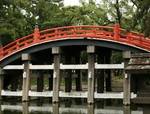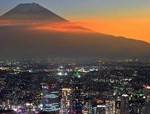Bhutan Travel
The Land of Thunder Dragon – is without doubt a most mysterious country in the world and a traveller’s paradise. The kingdom, often referred to as the last Shangri-la, is a land of outstanding people, remarkable scenery and natural wonders, and a proud and vibrant culture. The mystical land of Mahayana Buddhism is wedged between the world’s giants, India and China and three-fourths of the country is covered in forest. Bhutanese landscape is characterized by rugged terrain and steep mountain valleys from subtropical plains in the south through temperate zone to the Sub-Alpine Himalayas exceeding 7000 meters. Here is a kingdom that is just throwing off the veil of mystery, and opening its doors to visitors.Whether you are seeking for leisure or fun-filled or adventure vacations, family vacations, we can help you in making your Bhutan tour a memorable experience of a lifetime.
Join our marvelous tour packages in the Himalayas of the mystical land of Bhutan that combines nature, culture and adventure in a nutshell. Discover the cultural and natural wonders of this last remaining Mahayana Buddhist Kingdom of the Himalaya. Behold your surprise when you walk through the ancient streets full with pagoda architecture of the temples would definitely prove to be a truly Asian experience. Experience the wondrous Bhutanese countryside via hiking, trekking and mountain biking. A journey that takes you up to the dizzying heights, through rich coniferous forests, glacial lakes and across beautiful passes that offer amazing views of snow-capped mountains.
Bhutan travel: Country Information
Heartily welcome to roof of the world and land of Shangri-La. Bhutan, the legendary mountain kingdom of the Himalayas lie wedged between two Asian giants – India and China. This small Himalayan nation is bestowed by nature with an incredible diversity in topography resulting in a wide range of flora and fauna. The elevation of the country ranges from a few hundred meters above sea level to among the highest mountains. All within a distance of 150 kilometers resulting in sub-tropical climate to Arctic-like climate.
Bhutan travel: Quick facts of Bhutan:
Full name: Kingdom of Bhutan
Population: 697,000 (UN, 2009)
Capital and largest city: Thimphu
Area: 38,364 sq km (14,812 sq miles)
Major language: Dzongkha (official), Nepali, Sharchop
Major religions: Buddhism (official), Hinduism
Life expectancy: 64 years (men), 68 years (women) (UN)
Monetary unit: 1 ngultrum = 100 chetrum
Main exports: Electricity, timber, cement, agricultural products, handicrafts
GNI per capita: US $1,900 (World Bank, 2008)
Bhutan travel: Bhutan Climate
The seasons in Bhutan are pretty much the same as in Europe, opposite of the Australian seasons. In January it’s cold, while in July you could make do with shorts and t-shirt. The climate of Bhutan is moderate which means the winters are dry and the summers are hot. But because of the huge range in altitude and landscape, climate of Bhutan differs significantly throughout the country.
Bhutan has four major seasons:
Winter: December-February
Spring: March-May
Summer: June-August
Autumn: September-November
Best time to visit Bhutan
Autumn: (September, October, and November)
Spring: (March, April and May)
Accommodation
Bhutan has a small hospitality industry. However, all towns have hotels and lodges and all tourist lodges, hotels, and resorts are registered with the Department of Tourism. There are some international standard hotels in such touristy area as Paro, Jakar, Punakha, Gangtey and Thimphu. A few 5 star luxurious hotels have also been opened mostly in Thimpu and Paro.
Bhutan Government has categorized the hotels into A, B, & C category. Foreign visitors entering Bhutan as part of a tour have to pay the tariff set by the government around $250 per person per night in general. While on the trek, we provide tent or camping facility for the trekking group.
Bhutan travel: Geography
The Kingdom of Bhutan, almost exactly the same size as Switzerland, lies east of the Indian state of Sikkim and west of the Indian state of Arunachal Pradesh. It is south of Tibetan region of China and north of the Indian states of Assam and West Bengal.
Located in the heart of the high Himalayan mountain range, Bhutan is a land-locked country surrounded by mountains in the north and west. However its deep valleys running south from the Himalayas offer a remarkably temperate climate, even in winter when compared to northern Europe or northern USA, and a visit can be made any time of the year.
Altitudes in the south range from 300 to 1370 meters and in the more populated central region range from 120 meters in the east around Trashigang to a high of 5190 meters over the highest pass. The altitude at Paro is approx 2133 meters and in the capital Thimphu 2347 meters.
Bhutan travel: Festivals
Festivals in Bhutan have reputations for being raucous, joyous affairs. The most popular for tourists are those held in Thimphu & Paro and those seeking a more intimate Bhutan experience should consider avoiding these major festivals as they mark the busiest time of the year for the tourism industry. Air seats and hotel rooms are frequently difficult to come by and all major sites see larger numbers of visitors on a given day.
The Dzongs come to life with colour, music and dancing as valley dwellers and towns folk dress in their finest clothes and join together to exorcise evil spirits and rejoice in a new harvest. Rare masked and sword dances and other rituals are performed in the Dzong courtyard and temples. Tourists are allowed into the Dzongs to watch the spectacle, but not the inner sanctuaries.
Festivals date back to the middle ages
Most of the dances date back from beyond the Middle Ages and are only performed once or twice each year. Each dance has its own spiritual importance and can be performed by monks or lay village elders dressed in bright costumes. Certain festivals end with the unveiling and worship of huge religious appliques or Throngdrels. The moment of the unveiling is shrouded in secrecy and creates great excitement among all the participants.
Thimphu and Paro festivals are the most popular for tourists as they are the most accessible. There are other regional Dromchoes and Tshechu’s around the year, taking place in different localities of the kingdom, which are equally fascinating. Check the Festival date list. The Tshechu at Bumthang is well known for taking place almost entirely during the evening and containing exciting fire dances.











